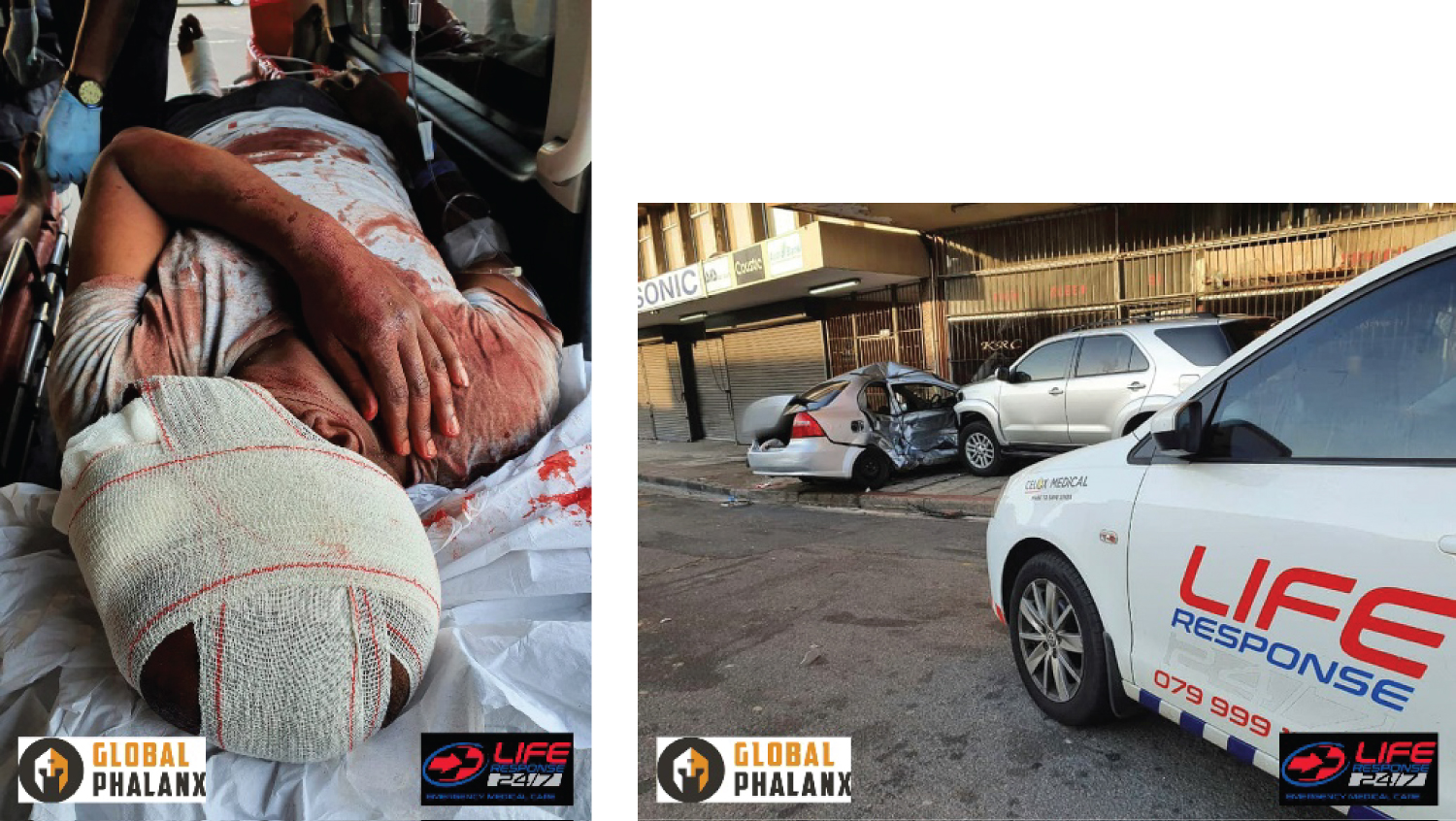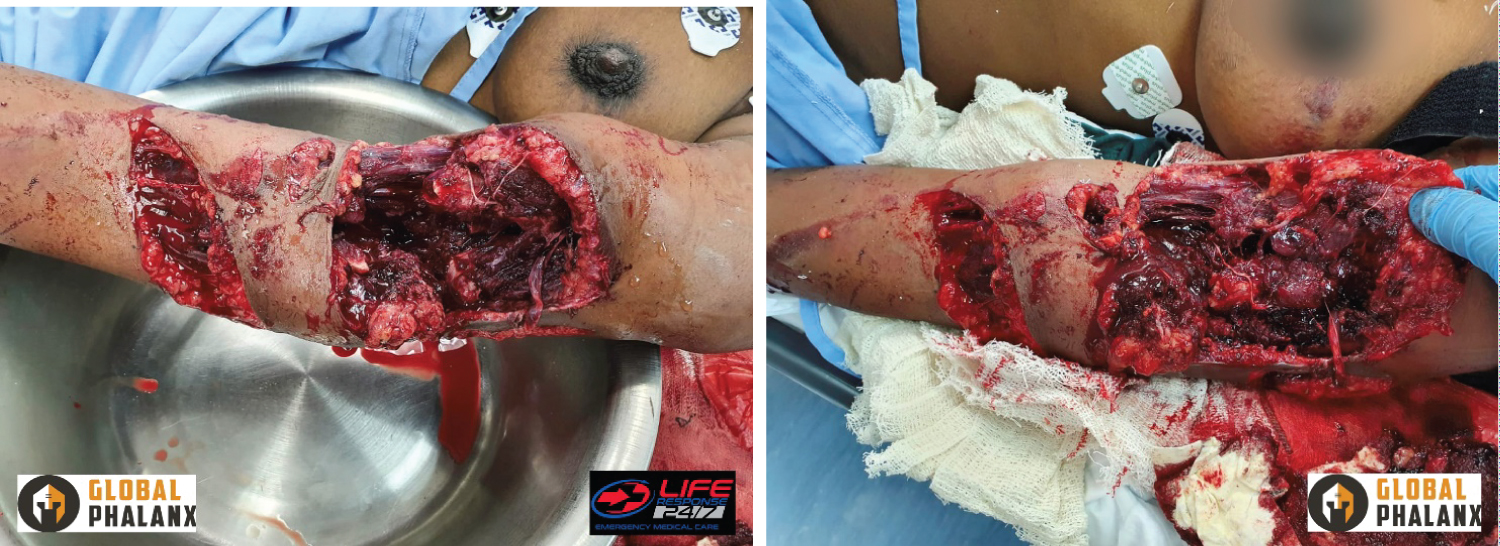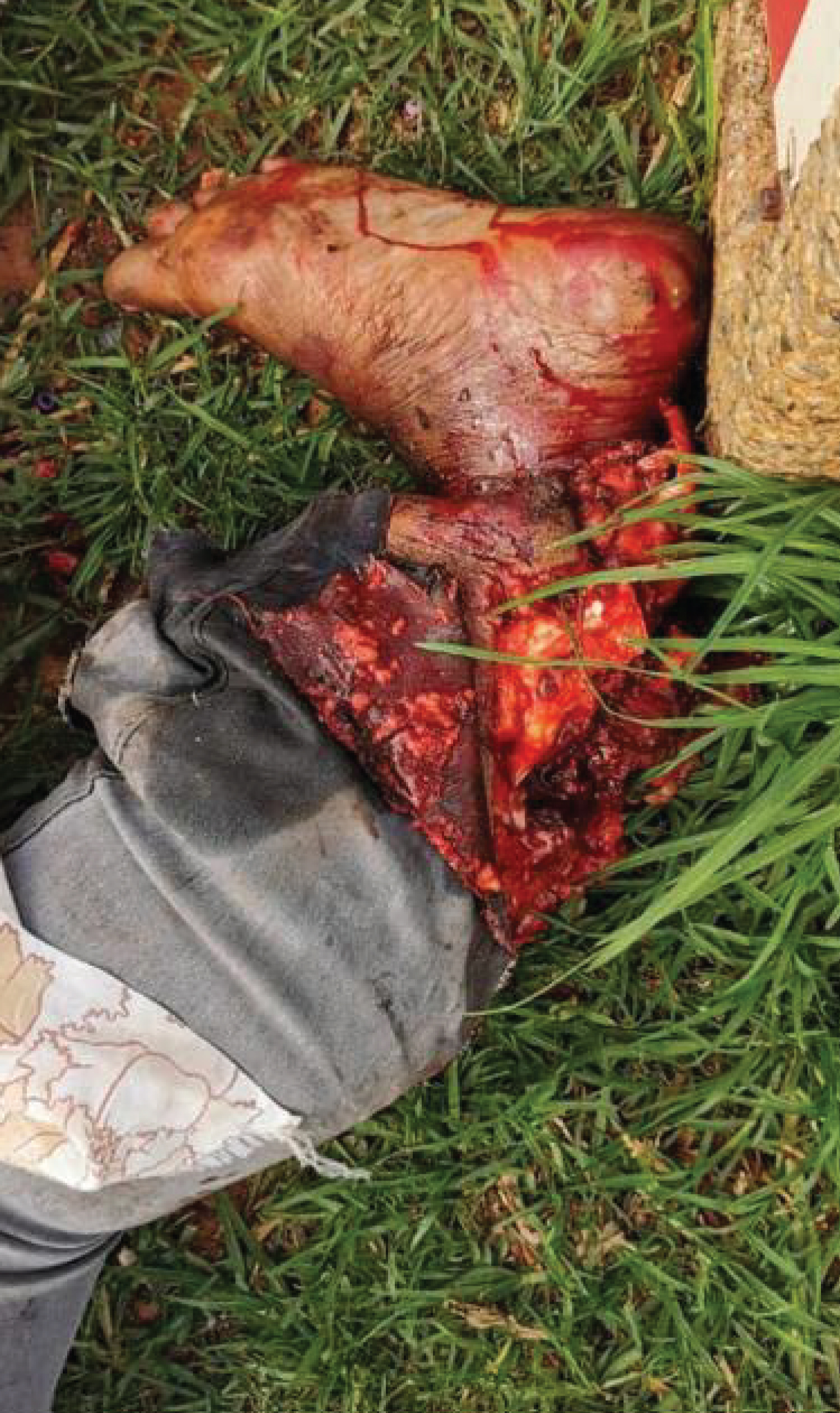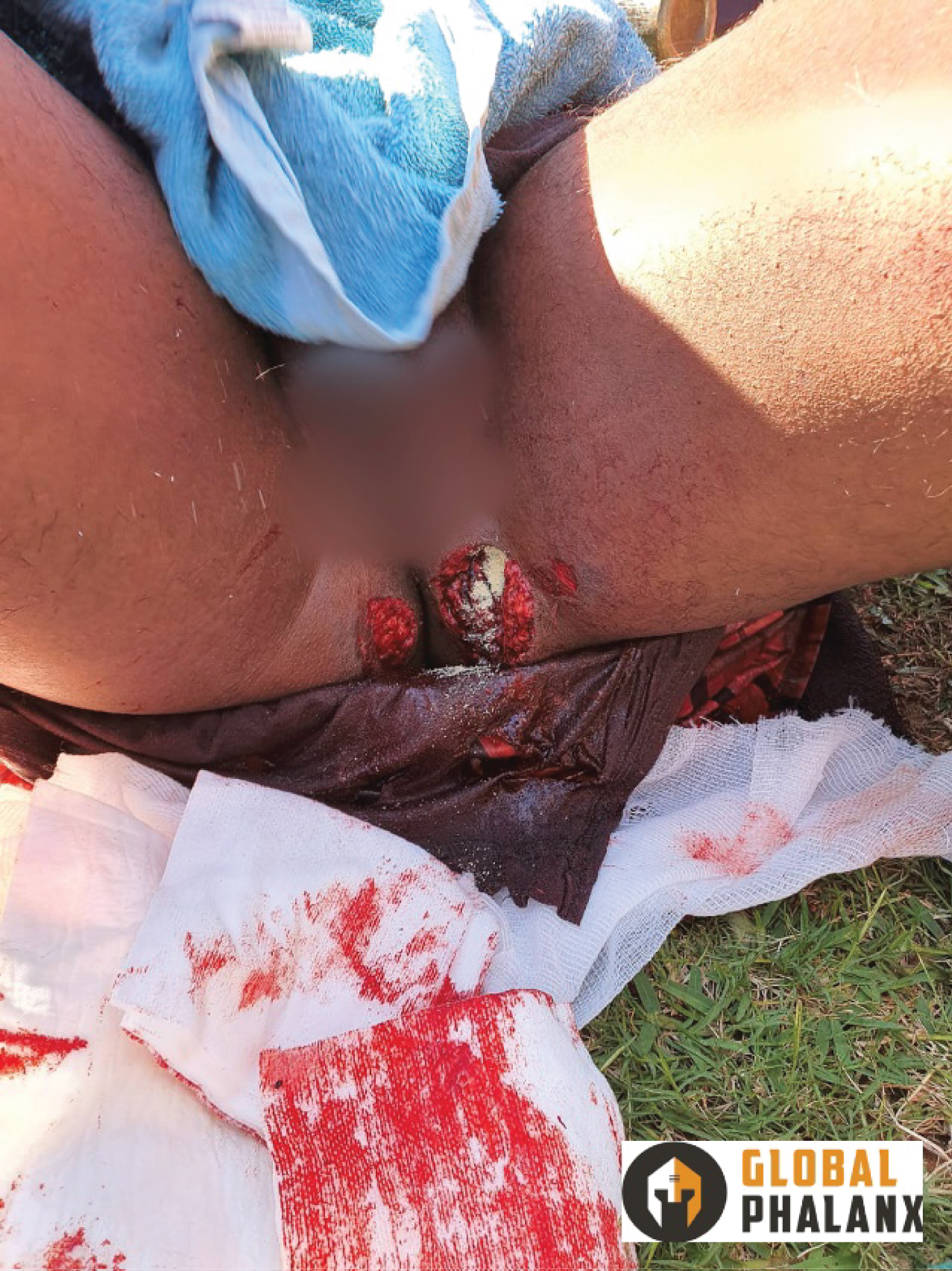Despite significant advancements in scientific understanding and technology, severe trauma remains a major global public health issue which causes significant social and economic consequences for society [1]. Haemorrhage from trauma is a leading cause of human mortality and accounts for one in every ten mortalities [2].
Overall, 25% of severely injured patients have an established trauma-induced coagulopathy on arrival at an Emergency Department, a phenomenon associated with an increased rate of early and late mortality [3,4]. These complications can be successfully prevented by the timely application of a haemostatic dressing [5], such as the Celox™ Rapid.
Celox products contain a proprietary chitosan derivative in the form of microscopic flakes that is both biocompatible and biodegradable [1,6]. It is highly compressed over a large surface area to rapidly promote clot formation, through absorption and dehydration. It does this independently of the body's clotting mechanism and without exothermic reaction or damage to the surrounding tissues [5-7]. Celox has been shown to be effective in those who receive anticoagulant medications, i.e., heparin or warfarin, and in conditions of hypothermia [6].
In many emergency situations, the available time for controlling haemorrhage is limited. In such conditions, the severity and number of wounds exacerbate the challenge of controlling bleeding quickly [8]. In a meta-analysis within a combat setting, where minimising treatment time is critical, Celox Gauze outperformed the other haemostatic agents tested, and was the only one to demonstrate a statistically significant improvement in survival, including in the more severely injured [9].
The most recent Celox product to market, Celox Rapid, reduces blood loss in moderate to severe injuries by speeding up packing time and reducing compression time to 60 seconds or until bleeding stops [10]. This rapid action helps save valuable time, and may enable the patient to be transferred to hospital more quickly.
Here we report on the clinical outcomes of using Celox Rapid in the emergency setting detailed in five case studies from South Africa. It is hoped that this real-world evidence will aid clinical decision making in the trauma setting.
Following a collision between two motor vehicles which resulted in one of the vehicles mounting the kerb and impacting a shop, a passenger sustained critical injuries, with a serious femur fracture to their right leg and apparent arterial bleed to the face just above the right eye. First responders attempted to stop the bleeding by applying direct pressure and bandaging but failed. Celox Rapid was then applied and bleeding stopped within 30 seconds. The patient remained haemodynamically stable while transferred to hospital and proceeded to make a full recovery (Figure 1).
 Figure 1: Femur fracture and arterial bleed to the face.
View Figure 1
Figure 1: Femur fracture and arterial bleed to the face.
View Figure 1
A collision between a taxi and a truck resulted in a patient sustaining a partial amputation on the left arm, above the elbow, with life threatening bleeding. First responders promptly applied Celox Rapid to the wound and implemented direct compression. The bleeding stopped within 40 seconds, enabling the patient to be stabilised, clinically evaluated, and receive pain relief. There was no further bleeding, either during transportation to hospital, or when the dressing was removed upon arrival. The patient went on to make a full recovery (Figure 2).
 Figure 2: Partial amputation to left arm.
View Figure 2
Figure 2: Partial amputation to left arm.
View Figure 2
A medical practitioner attended a road traffic accident where a 33-year-old female had sustained critical injuries when ejected through the windscreen of the minibus she has been travelling in. A therapeutic dose of morphine was administered for pain relief and a critical care paramedic was called. Upon their arrival, an initial assessment revealed the patient was haemodynamically stable, with a severe compound fracture to the left tibia/fibula. The patient was fully orientated but clearly distressed with tachycardia, mild tachypnoea but with a good blood pressure. As the patient refused to allow the wound to be touched, an analgesic dose of Ketamine was considered to allow movement of the limb (HEMS inbound), however this carried a high risk of dislodging clots and stimulating bleeding. Celox haemostatic gauze was therefore prepared and once ketamine was administered and patient was dissociated, the Celox gauze was applied to the limb to reduce blood loss. The gauze was held in place with a linen saver and crepe bandages and the limb was then splinted. Although some minor bleeding occurred, there was no major seepage from the Celox dressing and there was no need for a tourniquet.
The patient was handed over to the hospital team in a stable condition and surgery was performed in an attempt to save the limb. Unfortunately, the major nerve, tendon, bone, and muscle damage was too extensive, and the limb was amputated two months later (Figure 3).
 Figure 3: Serious compound fracture.
View Figure 3
Figure 3: Serious compound fracture.
View Figure 3
First responders were called to an armed robbery in which a male bystander, aged approximately 50 years, sustained a gunshot wound to his left upper femur region and another gunshot wound to his groin region between his buttock and upper leg. The wound was profusely bleeding and was not stopping with conventional methods. The awkward position of the injury (inner thigh towards buttocks region) further exacerbated attempts to stop further blood loss and the patient began sweating and became confused.
Celox applicator was filled with the haemostatic agent and inserted into the wound. This was repeated for a total of three applications and within 40 seconds the bleeding had stopped. From a blood pressure of 80 systolic, the patient stabilised to 105/68, enabling fluids and analgesia to be administered. The patient went on to make a full recovery (Figure 4).
 Figure 4: Gunshot wound to femur region.
View Figure 4
Figure 4: Gunshot wound to femur region.
View Figure 4
A young patient sustained a gunshot injury from a 9 mm handgun following an armed home invasion of his home by a criminal gang. The bullet penetrated the patient's left upper thigh causing both anterior and posterior wounds. Additionally, the bullet's trajectory and velocity caused a femur fracture and local vascular injury. On arrival, the emergency team noted a significant blood loss and the patient had entered the early stage of haemorrhagic shock.
Initial attempts to stem the bleeding using conventional dressing and direct pressure application failed and further assessment of the through-and-through injury site revealed ongoing bleeding.
As the team carried the Celox range, the Celox Haemostatic Gauze and Celox Haemostatic Granules were applied simultaneously to the gunshot wounds. In this case, the application of the Celox products allowed enhanced haemostatic action at the place of injury and this enabled the ongoing blood loss to be successfully reduced.
The use of Celox products stabilised the patient sufficiently to enable him to be safely transported to hospital, some distance away and ensured he remained clinically stable during the journey and on arrival at a Level One Trauma Centre.
These case studies have shown how Celox and Celox Rapid were applied to quickly reduce blood loss and compression time, in emergency situations. Despite conventional methods failing to stem blood flow, Celox Rapid was shown to achieve this, often within 30-40 seconds.
In their professional opinion, the attending physician in each of these cases felt that the outcome for each of these patients is likely to have been less favourable had it not been available. Since many first responder units are not routinely equipped with haemostatic dressings, these case studies demonstrate their significant value as a potentially life-saving treatment option.
These case reports were provided to Celox Medical with the approval of the patients and their medical teams. Medical writing support was provided by Andrea McConchie of Piper Medical Communications, funded by Celox Medical.